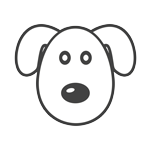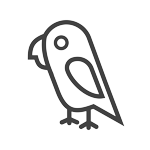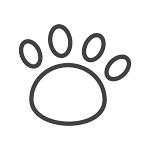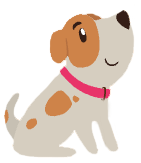
The Ultimate Pug Guide: Lifespan, Care & Personality
Pugs aren’t just dogs—they’re little shadows with big personalities, and they’ll happily follow you from room to room just to be near you. With their iconic wrinkled faces, expressive eyes, and comical snorts, it’s no wonder these charming little clowns have won over Aussie hearts for generations. But beneath the cute exterior is a breed with some very real needs—especially when it comes to health, breathing, diet, and emotional care.
Whether you’re already cuddling a Pug on your sofa or you’re still deciding if this breed is the right fit for your lifestyle, this guide has you covered. Drawing from years of hands-on experience working with flat-faced breeds in rescue and pet care, We’ll walk you through everything from choosing a reputable breeder to understanding their exercise limits and quirky personality traits. If you're ready to give your Pug the best life possible, grab a cuppa and let’s dive in.
Pug Overview: What Makes a Pug a Pug
Originally bred to be lap warmers for Chinese royalty, Pugs are small companion dogs with a lot of charm. They're affectionate, comical, and love being the centre of attention—basically, the life of the paw-ty. Despite their size, they’ve got a whole lot of dog in them.
- Height: 25–30 cm at the shoulder
- Weight: 6–8 kg on average
- Lifespan: Typically 12–15 years
They’re a popular choice in Australia for apartment living and family homes alike thanks to their affectionate nature and moderate exercise needs.
A Brief History of the Pug
Pugs date back over 2,000 years to ancient China, where they were treasured by emperors and lived in absolute luxury. Fast-forward to the 16th century, they hit Europe via Dutch traders and quickly became favourites among royals like Queen Victoria and Napoleon’s wife, Joséphine.
They made their way to Australia much later, but quickly became beloved thanks to their people-pleasing personalities and adorable, squashed faces.
Appearance: The Signature Pug Look

The Pug’s appearance is truly one of a kind—compact, round, and full of character. Their flat face (technically known as a brachycephalic skull) gives them that iconic squishy look, but it also comes with some breathing quirks we’ll talk more about later. Big, dark, soulful eyes seem to always be either judging you or begging for food, while their tightly curled tail sits proudly over their back like a cinnamon roll. And then there are the wrinkles—deep, expressive folds across their forehead and face that seem to tell a story with every tilt of the head.
Coat and Colour
Pugs have a smooth, short double coat that feels velvety to the touch but sheds quite a bit—don't let the low-maintenance look fool you! Common coat colours include fawn (by far the most popular), black, apricot, and the rarer silver.
Pug Coat Care & Grooming Tips
-
Brush 2–3 times a week with a rubber curry brush or soft-bristle brush.
-
Wipe between wrinkles daily with a damp cloth and dry thoroughly.
-
Bathe monthly, or more often if they get grubby.
-
Regular ear cleaning and nail trimming are essential to prevent discomfort and infection.
Pug Personality: Affectionate, Stubborn, Hilarious

Pugs are the definition of multum in parvo—“a lot of dog in a small space.” They may be little, but their personalities are anything but. Pugs are affectionate to a fault, often glued to their human’s side like furry little shadows. They’re happiest when they’re with their people—whether that’s snuggling on the lounge or snoozing under your desk while you work. They thrive on attention and can become quite anxious if left alone for too long, so they’re not ideal for full-time workers unless there’s someone home during the day.
Despite their loving nature, Pugs are also famously stubborn. Training can be a test of patience—they're clever, but only on their own terms. Still, their sense of humour and clownish antics make up for the sass. They’re great with children and usually sociable with other pets, making them excellent family companions. Just don’t expect them to be guard dogs—they’re more likely to greet strangers with a tail wag.
How Long Do Pugs Live?
The average lifespan of a Pug is 12–15 years, though this depends heavily on genetics, weight management, and respiratory health. Responsible breeding and proactive vet care can make a massive difference.
Common Health Issues
Brachycephalic Airway Syndrome: Due to their flat faces. This can make breathing, especially in heat, difficult.
Eye injuries and ulcers: Their protruding eyes are prone to scratches.
Obesity: Pugs love food. Obesity worsens breathing, joint issues, and heart health.
Skin fold infections: Moisture and bacteria build-up in facial wrinkles if not cleaned properly.
Routine vet checkups, a balanced diet, and exercise tailored to their ability help Pugs stay happy and healthy longer.
Newborn Pugs & Puppy Milestones

Newborn Pugs are absolutely tiny, weighing just 100–150 grams at birth. Because of their compact size and flat faces, they’re especially delicate in those first few weeks. Pug litters tend to be on the smaller side—usually 3 to 6 puppies—and sometimes require a bit of extra care, particularly if born via C-section (which is common in brachycephalic breeds). Their eyes begin to open around 10–14 days of age, and their first wobbly steps follow soon after.
They start the weaning process at around 4 to 5 weeks old but should remain with their mother and littermates until at least 8 weeks. This time is critical for developing proper social behaviours and learning bite inhibition through play. Warmth is essential—Pugs can’t regulate body temperature well when young, so a cosy, draft-free environment is a must. Breeders should monitor daily weight gain, encourage gentle human handling, and introduce basic sounds and scents early on to support healthy development.
Feeding Your Pug: Portion Control Is Everything
If you’ve ever seen a Pug stare down a treat like it’s a life-or-death situation—you’re not alone. These little dogs are famously food-obsessed, and while their enthusiasm at mealtimes is adorable, it can quickly lead to weight gain and associated health issues like joint strain, breathing problems, and even diabetes. Maintaining a proper feeding routine isn’t just about discipline—it’s about protecting their health long-term.
Pugs have a slower metabolism compared to more active breeds, and with their small size, every extra gram counts. Portion control is essential, and it’s worth investing in a quality feeding routine that matches their age, activity level, and any existing health conditions. It’s also helpful to space meals out to prevent gulping and bloating. Some Pug parents find success using puzzle feeders or automatic dispensers to slow things down and prevent begging.
Feeding Tips for Pugs
-
Portion size: ½ to 1 cup of premium dry food daily, split into two meals
-
No free-feeding: Measure out meals and remove leftover food
-
Choose lean treats: Skip fatty snacks; use cooked chicken, green beans, or carrot sticks
-
Use automatic or slow feeders: Helps manage cheeky overeaters
-
Monitor weight regularly: Adjust portions if they gain or lose weight
-
Always provide fresh water
Exercise Needs: Less is More, But Still Important
Pugs may be playful, but they’re not built for endurance. Their short noses make breathing harder, especially in warm or humid weather, so it’s important to tailor their exercise to suit their limits. A couple of short walks each day—around 10–15 minutes—is usually perfect for keeping them fit without overdoing it. They also enjoy short bursts of play inside the house, like tug-of-war or fetch in the hallway.
Mental stimulation is just as important as physical activity for this breed. Puzzle toys, snuffle mats, and obedience games are great ways to keep their minds busy. Always avoid walking your Pug in the heat of the day, as they’re prone to overheating. Early morning or evening is safest.
Training a Pug: Smart, But Stubborn
Training a Pug can be equal parts rewarding and frustrating. They’re intelligent and love food, which makes them eager participants—until they get bored or decide they’ve had enough. Their stubborn streak means consistency is key, but harsh training methods won’t work. Instead, stick to positive reinforcement: treats, praise, and short, fun sessions. Pugs respond best to gentle guidance and routine. Crate training is often effective for toilet training, as they dislike soiling their sleeping space. Early socialisation is also important—introduce your Pug to different people, pets, and environments while they’re still young to build confidence and prevent anxiety later.
Popular Pug Cross Breeds in Australia

Crossbreeding is on the rise, especially for people looking for Pug-like traits with fewer health risks (though that’s never guaranteed).
Dachshund and Pug Cross (Daug)
- Long body, shorter snout than a Pug
- Friendly, playful, slightly more energetic
- Prone to back issues (from the Dachshund side)
Pug and French Bulldog Cross (Frug)
- Super popular due to looks and size
- Stockier build, potentially fewer breathing problems
- Can inherit stubbornness from both breeds—training is a must
- Still requires careful monitoring of brachycephalic traits
Always research breed-specific needs before choosing a cross, and know that many health issues are still present in hybrids.
How to Choose a Reputable Pug Breeder in Australia
Choosing the right breeder is crucial for the long-term health and happiness of your Pug. Sadly, unethical breeders are common—especially for trendy, brachycephalic breeds like Pugs. A good breeder puts the dogs’ welfare above profit and will be transparent about health, environment, and parent history.
Red Flags to Avoid
-
No health or genetic testing done on parents
-
Pups “ready now” with no waiting list
-
Breeder sells multiple breeds
-
No questions asked of you as a buyer
What Responsible Breeders Do
-
Perform BOAS and other health screenings
-
Provide vet records and parent lineage
-
Raise pups in a home environment with early socialisation
-
Offer ongoing support and advice post-purchase
Is a Pug Right for You?
They snore, shed, and steal your spot on the lounge—but they’ll also love you with every snort and snuggle they’ve got. If you’re home often, patient with training, and ready to commit to daily wrinkle cleaning, a Pug could be the perfect fit.
Make sure they’ve got everything they need—from breathable raised beds for hot summers to portion-controlling feeders to keep that waistline in check. At PaWz, we’re proud to support Aussie pet parents with products designed for comfort, health, and lots of tail wags.










Leave a comment